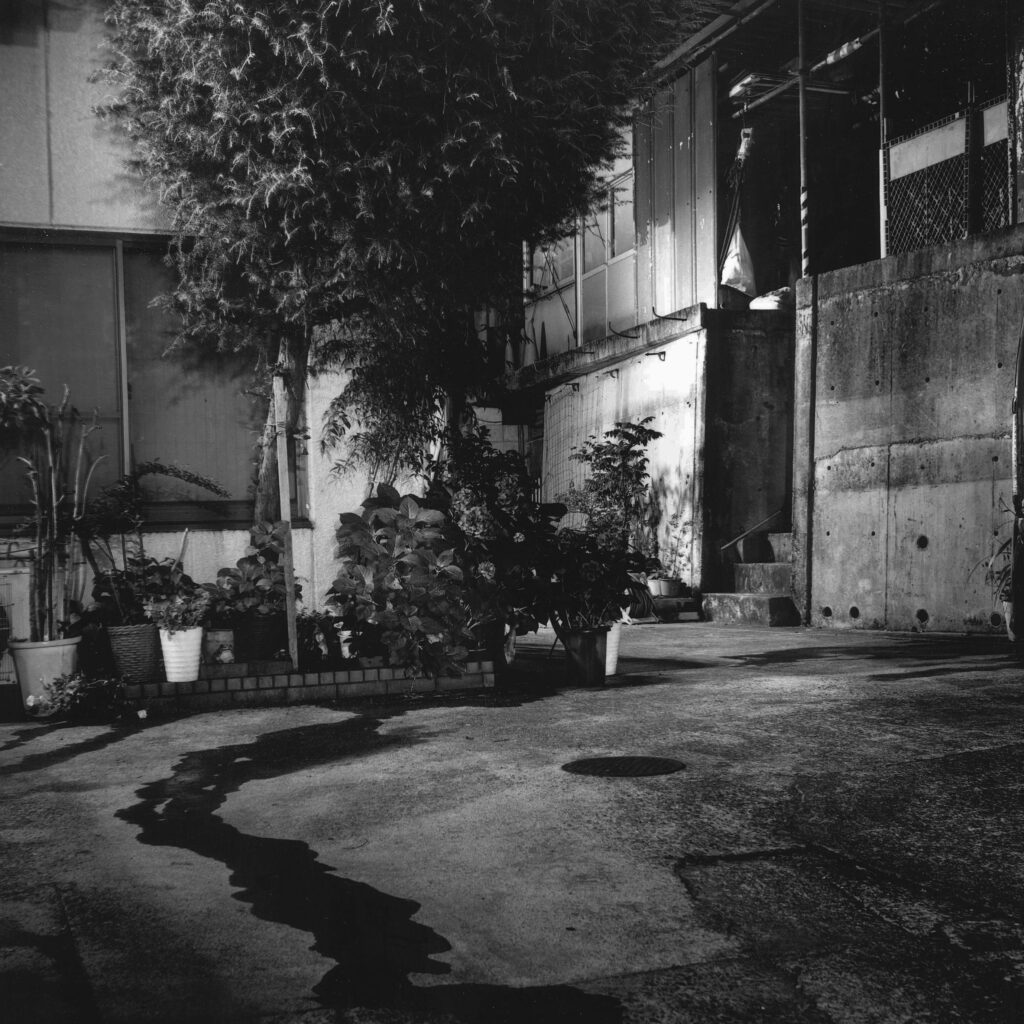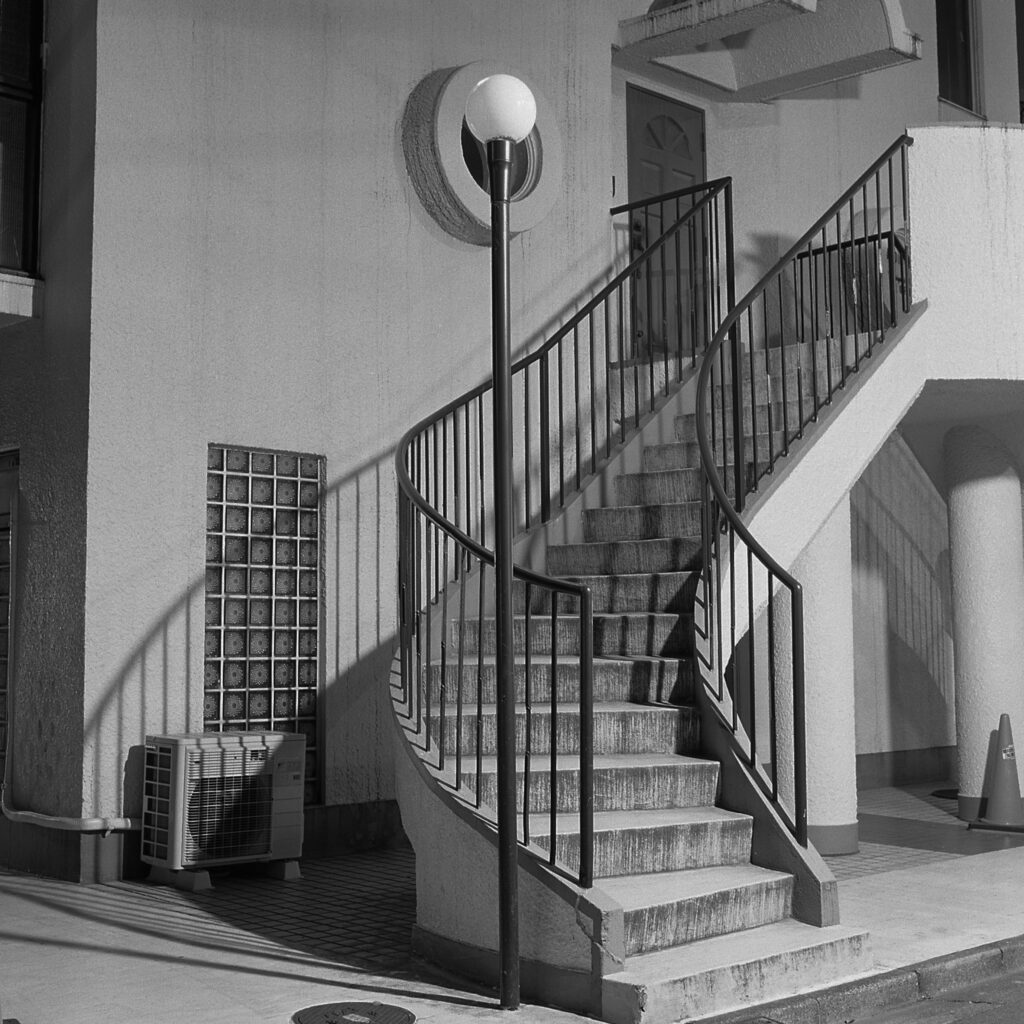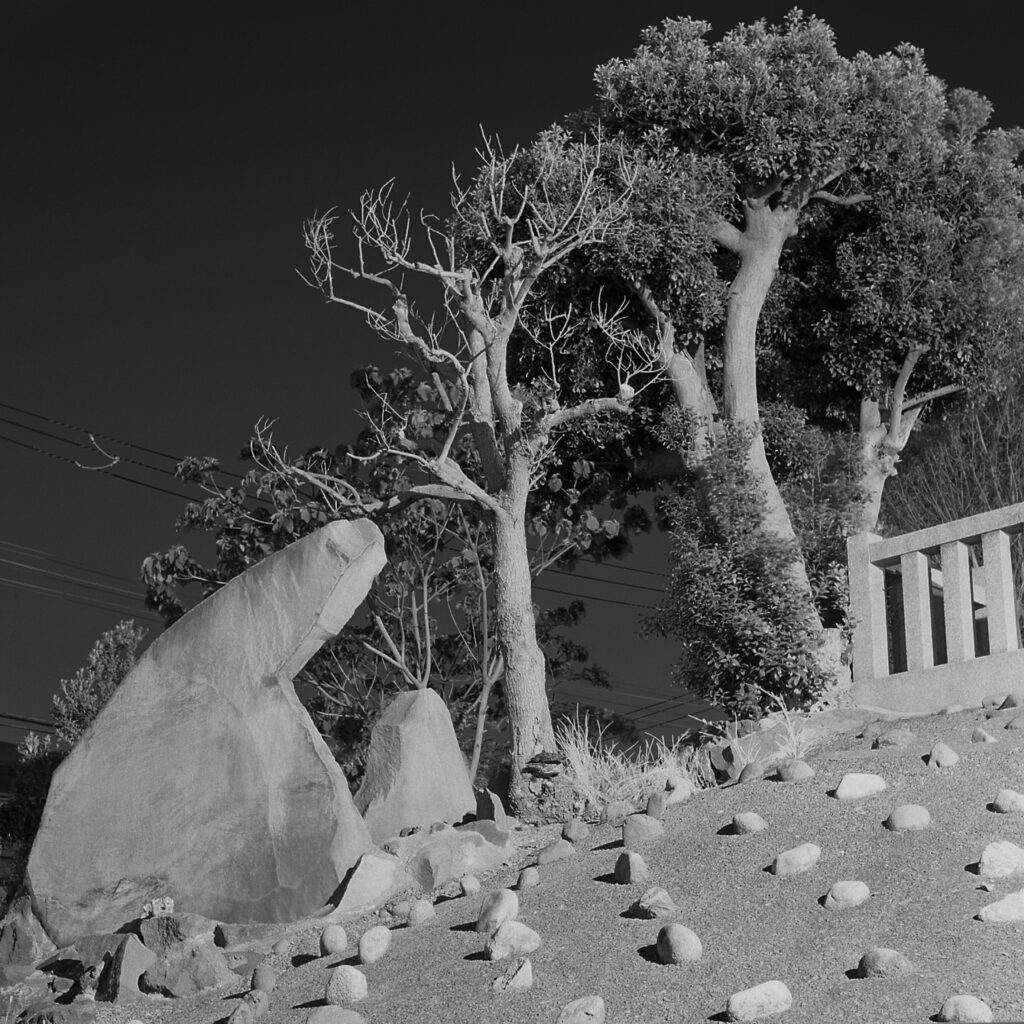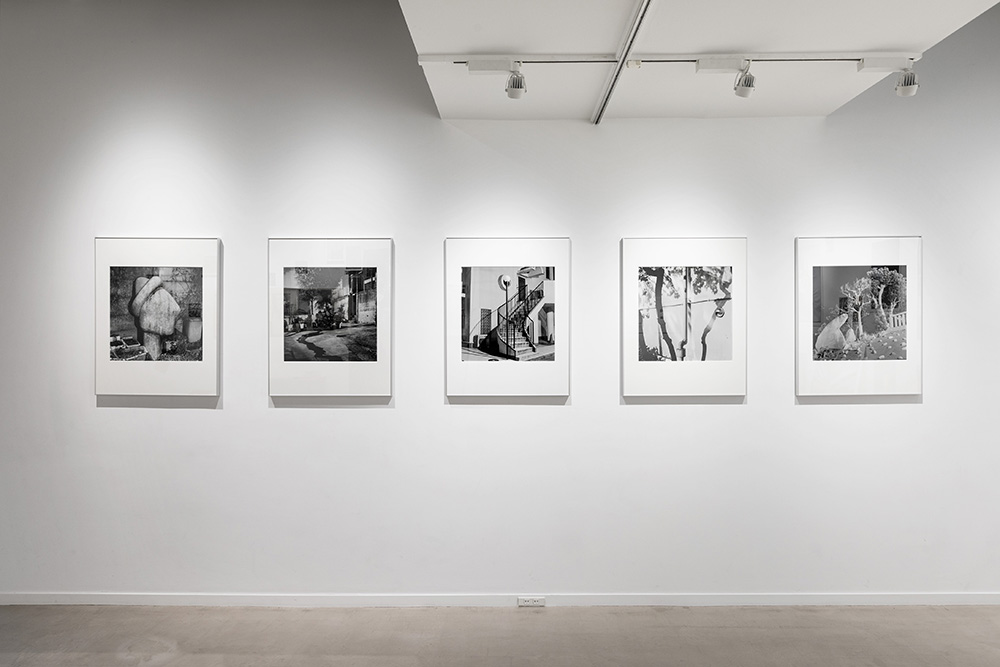




"Sleeping Land"
東京でデスクワークをする中で、深夜の帰り道に撮影を開始。
フィルム中判カメラを使い、深夜の街の僅かな灯りで長時間露光を行い、暗室でプリント。
写真は日常の風景ながら、模型や映画のセットのような非現実感を持ち、特定の時間や場所を超えた独自の世界観を構成。
リクルート「1_WALL」審査員から「現実感が抜け落ち、亡霊が徘徊しているよう」と評価された。
While working at his desk in Tokyo, he began taking photographs on his way home late at night.
Using a film medium-format camera, he takes long exposures in the slight light of the city late at night and prints them in the darkroom.
Although the photographs are of everyday scenes, they have a sense of unreality, like models or movie sets, and compose a unique worldview that transcends a specific time and place.
The Recruit “1_WALL” juror commented, “The sense of reality has slipped away, and it is as if a ghost is wandering around.